Modeling Techniques
Whether you’re just starting out or transitioning from other software, Hipflask’s Houdini Made Easy series is focused on getting you confident and capable using Houdini for all stages of the CG process. Hipflask builds real understanding by covering the fundamentals in depth, showing you why these principles are so integral to Houdini and just how to wield them.
12 チュートリアル 0:00:00
チュートリアル
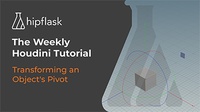
Transforming An Object’s Pivot
How to work with the pivot at the object level and important need-to-knows about pre-transforms.
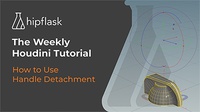
How To Use Handle Detachment
How to use handle detachment to provide a temporary reference point for transforms. Crucial for working effectively with Houdini’s snapping tools, this is an alternate method to moving the pivot, which we covered in our last weekly video.
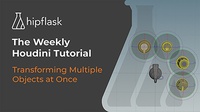
Transforming Multiple Objects At Once
This week: How to transform multiple objects at once. Global control vs local control, as well as handle modes – work faster by mastering the different options Houdini provides for transforming multiple objects all at the same time.
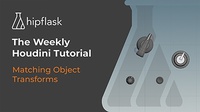
Matching Object Transforms
How to quickly match the transforms of one object to the transforms of another. It’s a nifty little tidbit that helps you work faster.
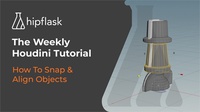
How To Snap & Align Objects
Building on skills we’ve covered in our previous weekly tutorials, this is just one of our multiple tutorials on snapping – an essential tool for efficient direct modelling and scene layout.
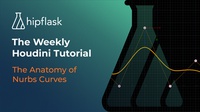
The Anatomy of Nurbs Curves
There’s a lot of specific terminology we need to understand to find our way around Houdini’s nurbs tools. CVs, breakpoints, primitive hulls – we cover all those and more in this mini tutorial and ones to come.
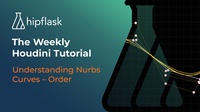
Understanding Nurbs Curves – Order
Continuing our series on understanding nurbs curves, we’re focusing on order. Learn how order affects the range of influence a control point has over your curve – just like curve degree, but with one key difference.

Understanding Nurbs Curves – CVs & Point Weight
The nurbs curves series continues with this lesson on CVs and point weight.
We’re talking how to create and work with the point weight attribute to control the amount of pull each CV has on a curve (super useful in procedural workflows), as well as a more useful method for hands on manipulation of nurbs curves.
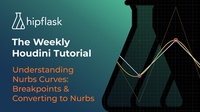
Understanding Nurbs Curves – Breakpoints & Converting to Nurbs
The nurbs curves series marches on. First up, how to draw and control nurbs curves using breakpoints. And to finish, two different methods for converting polygon curves to nurbs curves by treating the incoming points as either CVs or breakpoints.
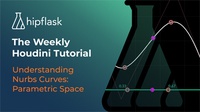
Understanding Nurbs Curves: Parametric Space
What’s parameterisation? Aside from a difficult word to say quickly. Here we have the first of three mini lessons unpacking the concept of parametric space. You might think it’s all about polygons these days, that nurbs are a thing of the past, but understanding nurbs curves and surfaces is really useful when it comes to procedural modelling, texturing and effects.
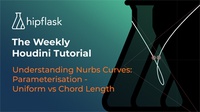
Understanding Nurbs Curves – Parameterisation: Uniform vs Chord Length
Breakpoints are an intuitive and efficient way of creating and working with nurbs curves, but to really make them work for you it’s crucial to understand the different parameterisation methods. In this lesson, we compare two of the three – uniform and chord length – and the impact they have on how the curve is drawn between the breakpoints.
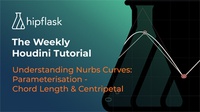
Understanding Nurbs Curves - Parameterisation: Chord Length & Centripetal
The final piece in our three-part mini series on parametric space compares the chord length and centripetal parameterisation methods – both useful, but for different curve shapes.
Category: Modeling